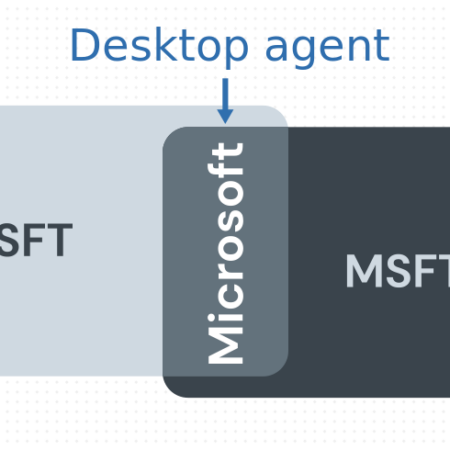The Desktop Renaissance
Financial technology is undergoing a rapid change. In the same way that companies shifted to web systems in the 90s, there is momentum to replace legacy desktop systems (.NET and Java) and web 1.0 systems (Flash and Silverlight) with HTML5 desktop applications. HTML5 is the most compelling state-of-the-art technology for building any GUI-based, cross-device application. HTML5 allows developers to deploy a single code base to both the browser and the desktop. Along with its siblings, CSS and JavaScript, HTML5 can build 99% of today’s applications.
HTML5: The Promise of Interactivity
Over the last thirty years, the financial industry has been unduly reliant on legacy technology. As a result, retail brokerages and large institutional banks have been stymied and are now behind the innovation curve.
When managing and analyzing large amounts of data, traders and analysts need interactivity. They need to be able to zoom in, zoom out, annotate, draw lines, and more. Legacy technology can render static charts, but dynamic charts are the critical financial tools that traders and analysts need to be successful at their job. These dynamic tools are difficult to achieve with legacy technology—not only because it puts a burden on the developer to build that functionality, but because some of the tools that they are leveraging were not meant to be dynamic. At its core, HTML5 provides this interactivity.
HTML5 offers the ability to build powerful user interfaces that break the old paradigms. Because HTML5 is so flexible, it can accommodate any interface, giving developers freedom and agility. Programmers can build an interface that actually solves the problem rather than trying to cram a problem into a pre-existing interface. The end result is that businesses that use HTML5 have happier customers and better user experiences across the board.
HTML5 runs within browsers, whether it’s a desktop, smartphone, or tablet. It is connected to the power of the internet and cloud-based services, and, with recent innovations, it can run in standalone “browser containers” that mimic traditional desktop applications without being resource heavy. It supports all the key media types, from PDFs to streaming video. It is extremely stable, secure, and requires no updates.
HTML5 is well past the tipping point—it’s been thoroughly vetted, matured, and is here to stay. With confidence and patience, many financial companies have understood the benefits of HTML5 and are taking steps to move away from legacy technology.
Once in a Generation Shift
Though capital markets firms are moving towards updating their technology stack with these kinds of best-in-class software solutions, there are industry-specific concerns that prevent them from immediately or completely abandoning their legacy applications altogether. Our solution is interop.io.
interop.io is an interoperability technology provider used to connect applications of any type on the desktop. Interop.io allows different pieces of software to be “assembled” into a single desktop application. These applications look, feel, and behave like native desktop applications, but are built in HTML5. This allows firms to use all the tools they’re currently using—legacy, modern, or third-party—and have them all seamlessly work together. Thus, interop.io is a bridge into modernity for the financial tech world.
Last Updated on August 16, 2023

